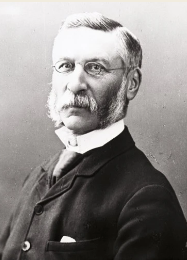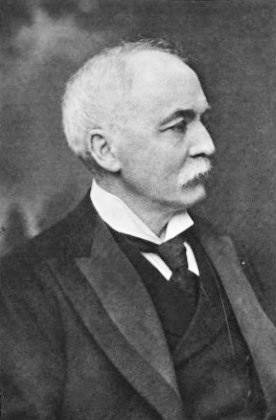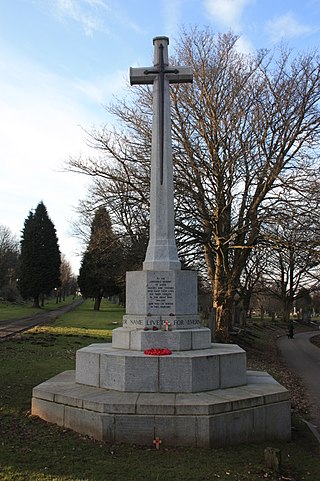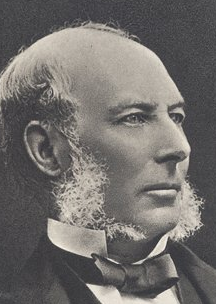Related Research Articles

The Dean Cemetery is a historically important Victorian cemetery north of the Dean Village, west of Edinburgh city centre, in Scotland. It lies between Queensferry Road and the Water of Leith, bounded on its east side by Dean Path and on its west by the Dean Gallery. A 20th-century extension lies detached from the main cemetery to the north of Ravelston Terrace. The main cemetery is accessible through the main gate on its east side, through a "grace and favour" access door from the grounds of Dean Gallery and from Ravelston Terrace. The modern extension is only accessible at the junction of Dean Path and Queensferry Road.

Sir William Collins (1817–1895) was a Scottish publisher, prominent in the temperance movement who served as Glasgow's Lord Provost between 1877 and 1880. He was the first fully abstaining Lord Provost of Glasgow and gained the nickname Water Willie. In politics Sir William was an advanced Liberal, and in ecclesiastical matters he was an adherent of the Free Church. Collins Street in Glasgow is named after him.
James Moncreiff, 1st Baron Moncreiff was a Scottish lawyer and politician.
Sir James David Marwick FRSE was a Scottish lawyer, historian and town clerk. He served as Town Clerk of Glasgow for thirty-one years, during which time the entire city was transformed. Its powers and amenities were improved by by-laws and Acts of Parliament, and Marwick directed the city of Glasgow's development for much of the second half of the 19th century.

Robert Inerarity Herdman RSA RSW was a Victorian artist specialising in portraiture and historical compositions. He is also remembered for a series of pastoral scenes featuring young girls.

Sir James King, 1st Baronet, FRSE was a Scottish businessman who served as Lord Provost of Glasgow 1886 to 1889. He was Director of the Clydesdale Bank for over forty years. He was also Chairman of the Caledonian Railway Company. His family motto was “Honos Industriae Praemium”.

William Muir FRSE (1787–1869) was a Scottish minister of the Church of Scotland. He served as Moderator of the General Assembly of the Church of Scotland in 1838.

James Matthews was a prominent 19th-century architect in northern Scotland who also served as Lord Provost of Aberdeen from 1883 to 1886 during which time he enacted an important city improvement plan. His work as an architect is largely in the Scots baronial style.

SirWilliam Bilsland LLD was a Scottish baker who owned one of Scotland's largest bakeries, and was Lord Provost of Glasgow. He was an elder of the United Free Church of Scotland and a supporter of the temperance movement.

Sir John Ure Primrose, 1st Baronet DL LLD (1847–1924) was a Scottish merchant who served as Lord Provost of Glasgow from 1902 to 1905 and as Chairman of Rangers Football Club from 1912 to 1923. He was also Chairman of the Clyde United Navigation Trust.
Sir William McOnie DL LLD (1813–1894) was a Scottish merchant who served as Lord Provost of Glasgow from 1883 to 1886.

Craigton Cemetery is a cemetery in south-west Glasgow dating from the mid-19th century. It stands on Berryknowes Road.
Sir James Bell, 1st Baronet, DL JP was a Scottish shipping owner and coal-exporter who served as Lord Provost of Glasgow from 1892 to 1896.

Sir David Richmond was a Scottish businessman who served as Lord Provost of Glasgow from 1896 to 1899. He was Director of David Richmond and Co., tube makers.

Sir John Muir, 1st Baronet DL JP (1828–1903) was a Scottish businessman who served as Lord Provost of Glasgow from 1889 to 1892. He founded Finlay Muir & Co, one of the world's largest 19th century companies.
Laurence or Lawrence Craigie (c.1750–c.1833) was an 18th/19th century Scottish merchant and local politician who twice served as Lord Provost of Glasgow.

Archibald Scott (1837–1909) was a Scottish minister who served as Moderator of the General Assembly of the Church of Scotland in 1896.

Sir James Lumsden DL was a Scottish stationer and merchant who served as Lord Provost of Glasgow from 1866 to 1869. He was known as the Knight of Arden.

Sir William Leslie of Nethermuir (1802–1879) was a Scottish architect and building contractor who served as Lord Provost of Aberdeen 1869 to 1873.
References
- ↑ Glasgow Post Office directory 1850
- ↑ Glasgow Post Office Directory 1870
- ↑ "University of Glasgow :: Story :: On This Day: 18th of February". universitystory.gla.ac.uk. Retrieved 4 April 2020.
- ↑ History of the Lodge of Edinburgh (Mary's Chapel) 1873